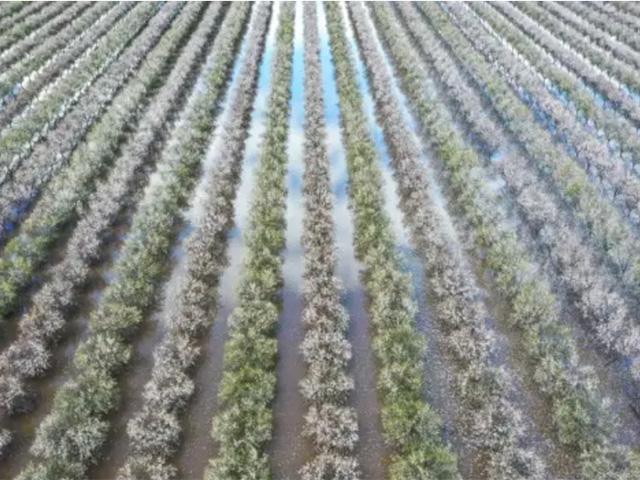Ag Weather Forum
Atmospheric Rivers Leave California Ag in Wait-and-See Mode
Much of California is a water and snow world after the conveyor belt of atmospheric river events during the past winter and this early spring. A mid-January Washington Post article estimated that 32 trillion gallons of water had fallen in California. The past eight weeks have seen even more heavy precipitation. USDA meteorologist Brad Rippey offered this summation in the March 28, 2023 USDA Weekly Weather and Crop Bulletin:
California's recovery from a three-year drought neared completion, as additional Pacific storminess battered the state with heavy rain, mountain snow, and high winds. The San Joaquin Valley's formerly dry Tulare Lake began to take on water, inundating low-lying communities and agricultural land ... with the average water equivalency of the Sierra Nevada snowpack rising above 58 inches (more than 225% of normal), according to the California Department of Water Resources.
By March 25, season-to-date snowfall at the Central Sierra Snow Lab in Donner Pass, California, topped 690 inches, with a water equivalency of more than 70 inches ... Some of California's heaviest precipitation fell on March 21, when daily record rainfall amounts included 1.53 inches in Long Beach and 1.43 inches in downtown Los Angeles ... the San Joaquin River at Vernalis remained at its highest level since January-February 2017, with higher crests observed only in February-March 1938, April 1940, December 1950, January 1969, March 1986, and January 1997.
Drought easing is obvious with this super-heavy precipitation. However, the drought benefit is coming at a cost; the almond and produce crops which give Central California the nickname "America's Salad Bowl" face lower production due to damage and delays caused by either flooding or low temperatures which accompanied the rain and snow. I reached out to the San Joaquin Valley Farm Bureau Federation for in-country detail. The organization's executive director, Andrew Genasci, offered an assessment of concern for how bad the short-term impact could get.
P[L1] D[0x0] M[300x250] OOP[F] ADUNIT[] T[]
"It's going to be bad, but we don't know how bad," Genasci said. "We won't know anything definite until it stops raining."
One crop which is definitely damaged is the first bloom cycle of the almond crop due to flooding and cold. "The early bloom is gone (because of the freeze)," Genasci said.
The almond crop is truly specialized. Genasci said that California produces 95% of the world's commercial almonds; and 70% of the California crop comes from the San Joaquin Valley. Some of a projected shortfall can be made up by offering almonds in storage to meet demand. But, again, how much of a deficit can be met with stored inventory is uncertain.
It's possible as well that vegetable prices could climb because of delays. Even after the rain quits, fields still need to dry out in order to plant or replant crops. Genasci noted that early plantings of potatoes and carrots were ruined by flooding. "We'll have delayed planting and less ground planted" because of the rain, Genasci said.
There will, of course, be more flood threats as the year goes on, when the heavy snowpack melts and river and stream surges build again. The atmospheric river effects will be felt for a long time.
Bryce Anderson can be reached at bryce.anderson@dtn.com
Follow him on Twitter @BAndersonDTN
(c) Copyright 2023 DTN, LLC. All rights reserved.






Comments
To comment, please Log In or Join our Community .